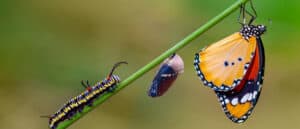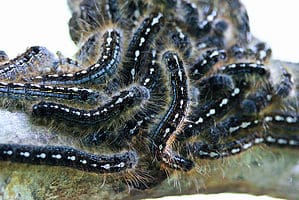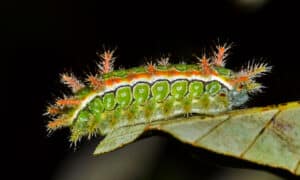One thing to know about baby caterpillars is that all caterpillars are babies! That’s because a caterpillar is one of the first stages in the life of a butterfly. Baby caterpillars start their lives after hatching from eggs, and they grow very fast. In fact, the caterpillar stage of a butterfly’s life only lasts around 18 days.
However, there is a huge difference between a freshly hatched caterpillar and one that has lived for a week or two. Keep reading to learn more baby caterpillar facts and how they grow and change over this short period of time.
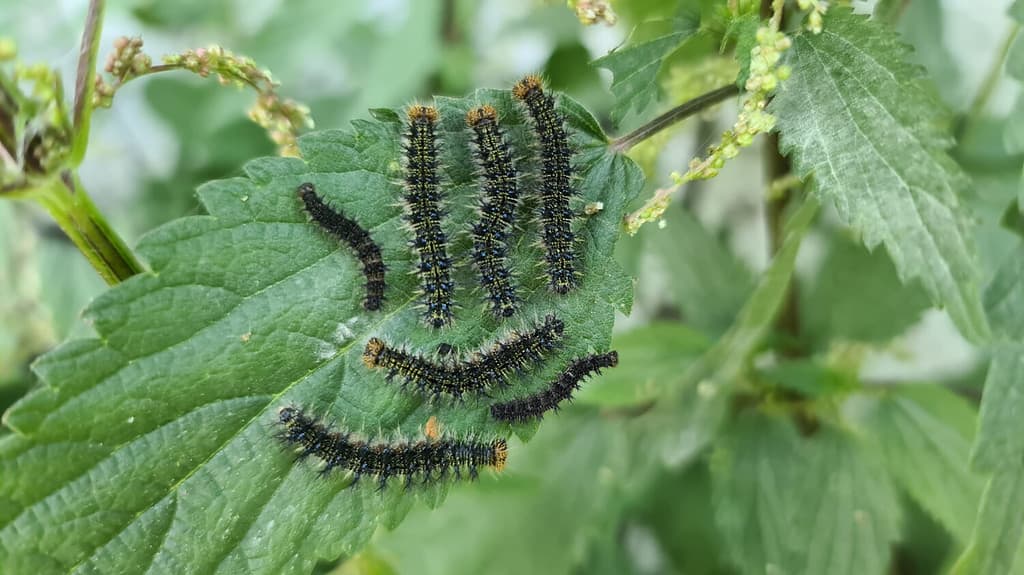
Technically, every caterpillar is a baby because it’s the very first stage of a butterfly’s life after hatching from an egg.
©Jrs Jahangeer/Shutterstock.com
1. They Will Gain Nearly 1,000 Times Their Body Mass
A caterpillar’s first job is to eat, in fact, as soon as it hatches from its egg, the caterpillar will eat the shell. The eggshell, also called the chorion, is full of protein and other vitamins that will secure a great start for the baby caterpillar. While it’s hard to imagine a 7-pound baby human gaining 1,000 times their weight (think 7,000 pounds!), baby caterpillars do it with ease! That’s because they are able to molt.
When a baby caterpillar molts, it sheds its skin and will often eat it. That old skin is called its exoskeleton, and it’s made up of the outer cuticle or skin of the caterpillar. Most baby caterpillars molt between 5 and 6 times in their lifetime.
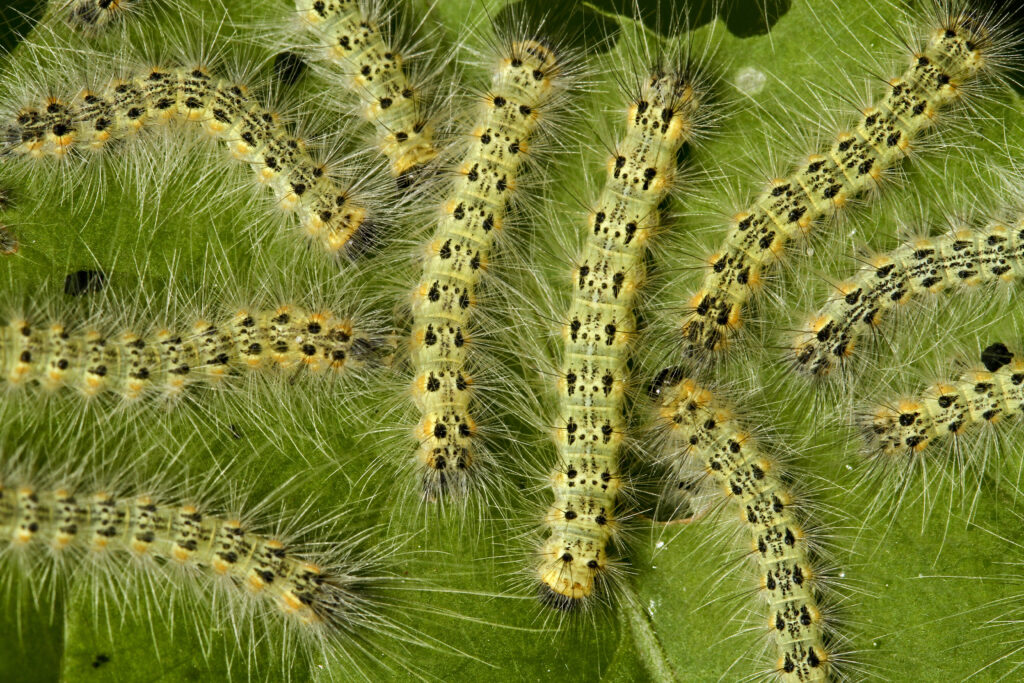
Baby caterpillars are some of the fastest-growing insects, but each type of caterpillar grows at a different rate.
©Geza Farkas/Shutterstock.com
2. A Newborn Baby Caterpillar Measures Just 1/16th of an Inch
Knowing that baby caterpillars will increase their mass by 1,000 times during their short early life, you’ve probably guessed that they must start out pretty tiny. When a caterpillar first hatches, it’s usually 1/16th of an inch in length. That’s so tiny, that without a magnifying glass or other visual aid, you may not even realize what you’re looking at. To compare it to other things, a freshly hatched baby caterpillar is smaller than a grain of rice!
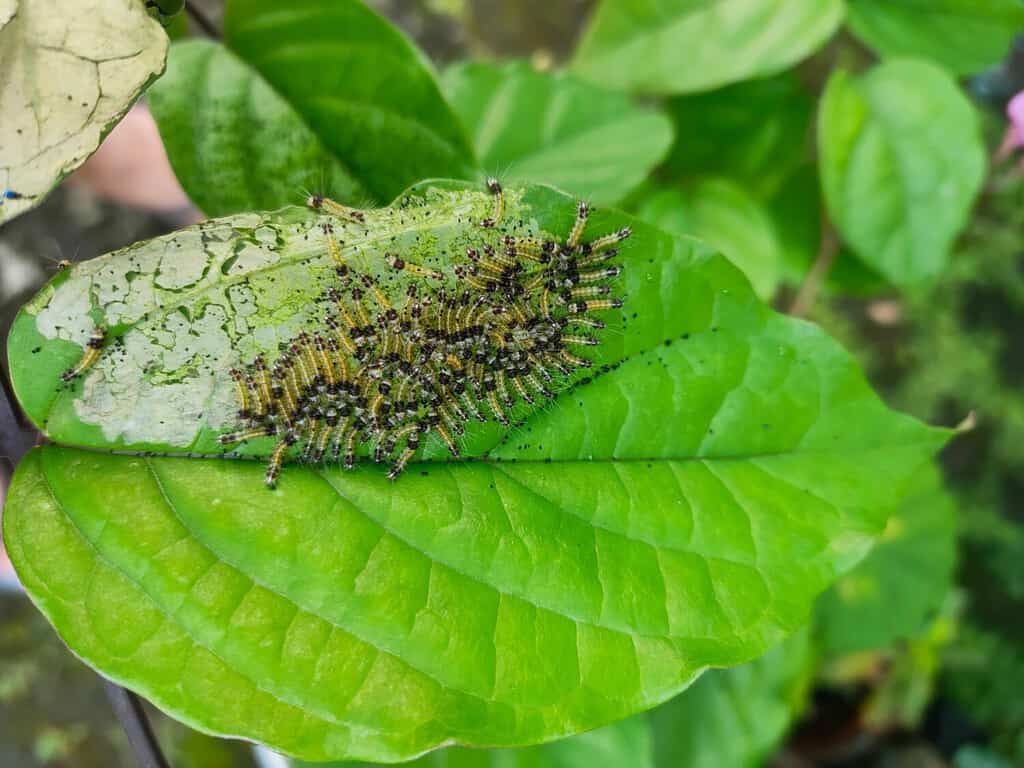
Imagine being smaller than a grain of rice! Baby caterpillars must have a unique perspective of the world.
©Stickystock/Shutterstock.com
3. Baby Caterpillars Have 12 Eyes
Although butterflies only have two eyes, like us humans, baby caterpillars hatch with six eyes on each side of their face. Some species have more or less, ranging between ten and fourteen eyes, but twelve is the most common. Despite having so many ways to see, caterpillars can’t see very well. Their eyes mainly allow for the differentiation of light and dark, rather than actual color. It’s not until their final metamorphosis into butterflies that they can see in color.
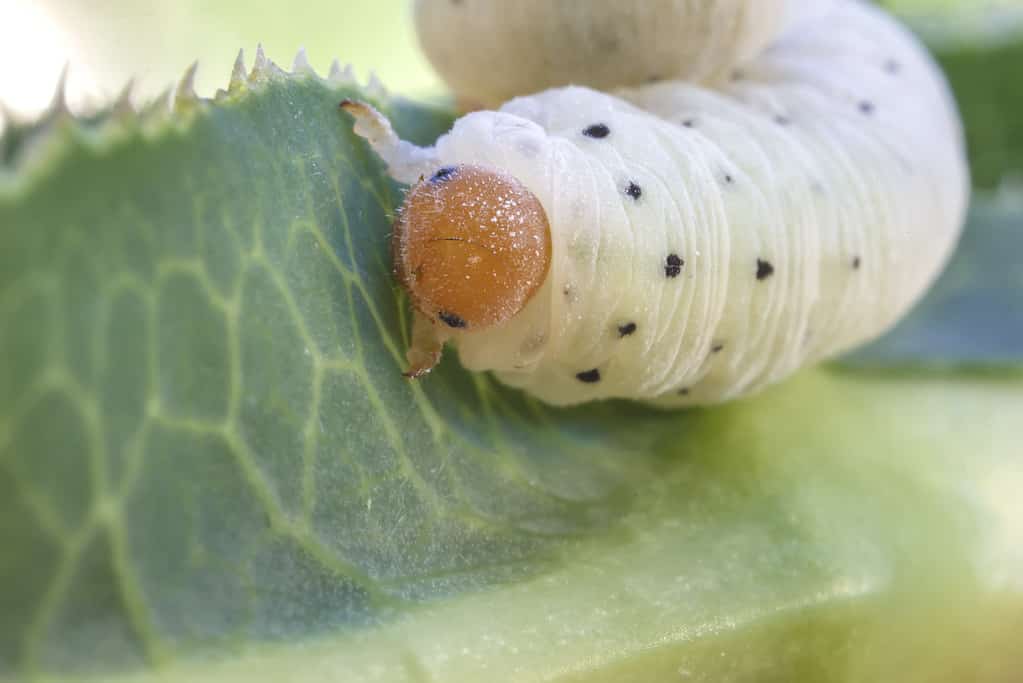
Although caterpillars have quite a few eyes, it’s hard for us to see them since they’re so small!
©sirene68/iStock via Getty Images
4. They Have a Bunch of Fake Legs
While it may sound funny, it’s true! When you see a caterpillar, you probably notice that it looks like they have close to 10 or 20 legs. However, caterpillars have the same number of legs as adult butterflies and moths: six.
Those six ‘real’ legs are on the caterpillar’s thoracic segments (a little below their heads), with three on each side. Baby caterpillars will keep those legs into adulthood after they transform into butterflies.
But why so many fake legs? The false legs are also called prolegs, and they help caterpillars climb, walk, and travel across plants. Depending on their type, baby caterpillars often have a different number of prolegs, ranging from two to five pairs.
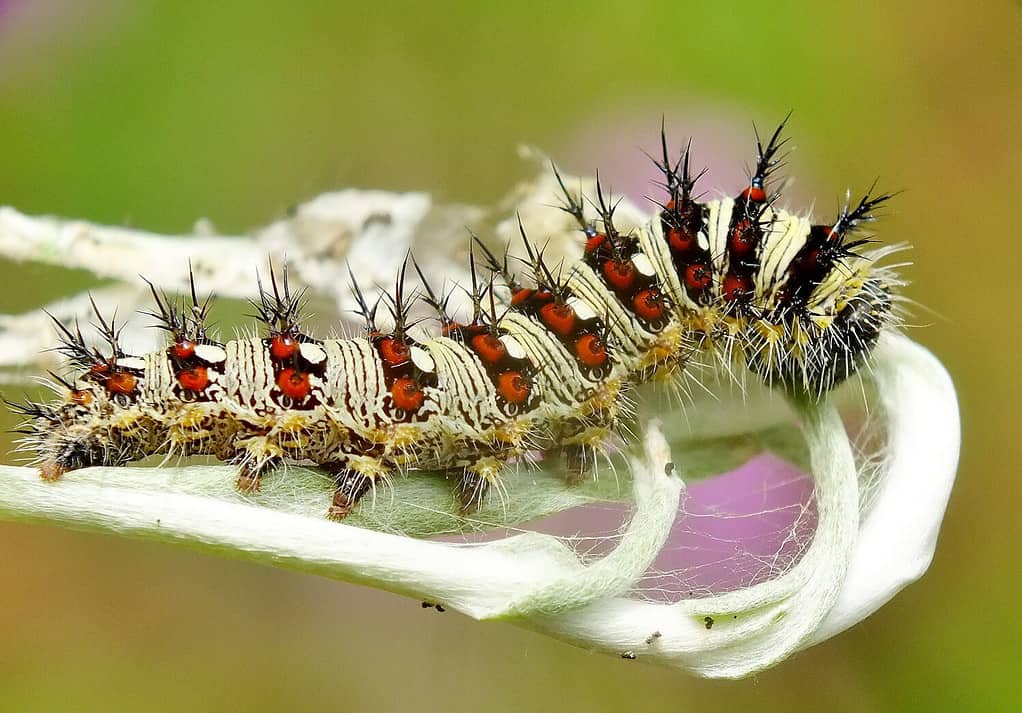
It may look like this caterpillar has 8 sets of legs, but its six true legs are near the top of its body.
©AnaGoncalves93/Shutterstock.com
5. Baby Caterpillars Have Some Unique Defensive Strategies
Since caterpillars are so small, slow, and have very little vision, they’ve had to develop some unique defenses to predators. Baby black swallowtails are some of the experts on this. When a baby black swallowtail caterpillar hatches, it’s black with one white stripe in the middle. This coloration makes them appear similar to bird poop! While it may sound funny, this coloring protects them from many predators looking for a snack.
After the first few days of life, the black swallowtail caterpillars’ coloration changes. Their black and white exterior turns into green, yellow, and black or white stripes. That’s because the caterpillars are moving around, eating leaves, and consuming plant products, so the coloring helps them blend in with their surroundings. Other species of caterpillars rely on their bright coloring — like the bright green-and-red IO moth caterpillars or the red-and-purple faithful beauty caterpillars.
Aside from physical deterrents, baby caterpillars also use methods like defensive postures. Many types of caterpillars have a unique ability to widen their anterior body segments. This helps widen their eyes and heads, which in turn helps the caterpillars to appear more like snakes. Since many predators won’t mess with a snake, caterpillars have learned to present themselves as closely to the reptiles as possible!
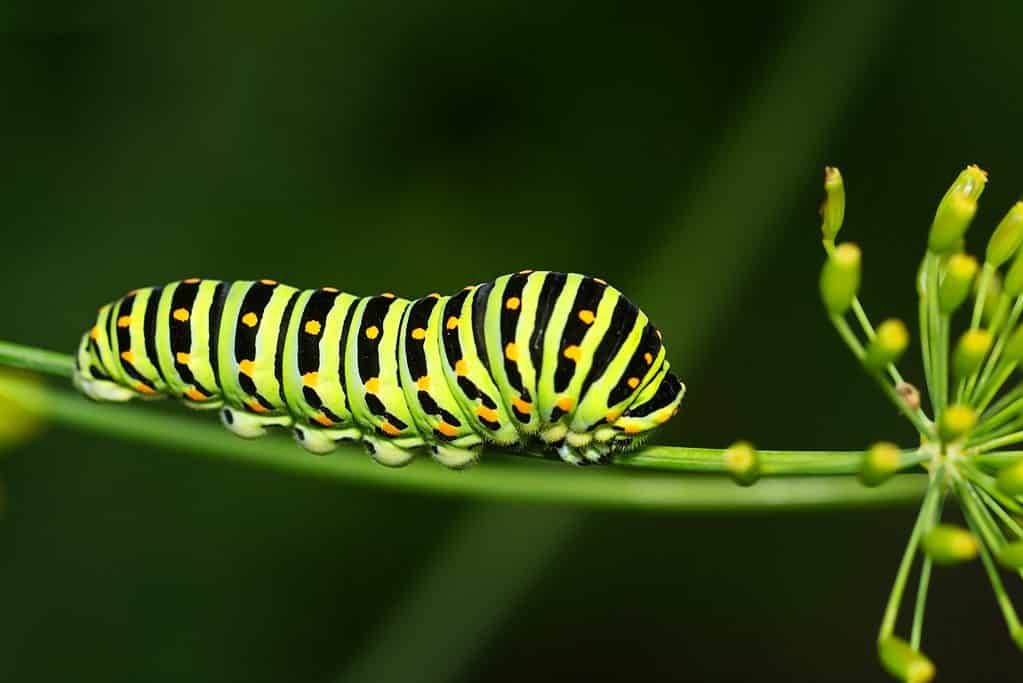
Black swallowtail caterpillars are hard to spot amongst the greenery, which works to their advantage!
©Graphicato/Shutterstock.com
The photo featured at the top of this post is © Evgeniy_16/Shutterstock.com
Thank you for reading! Have some feedback for us? Contact the AZ Animals editorial team.



